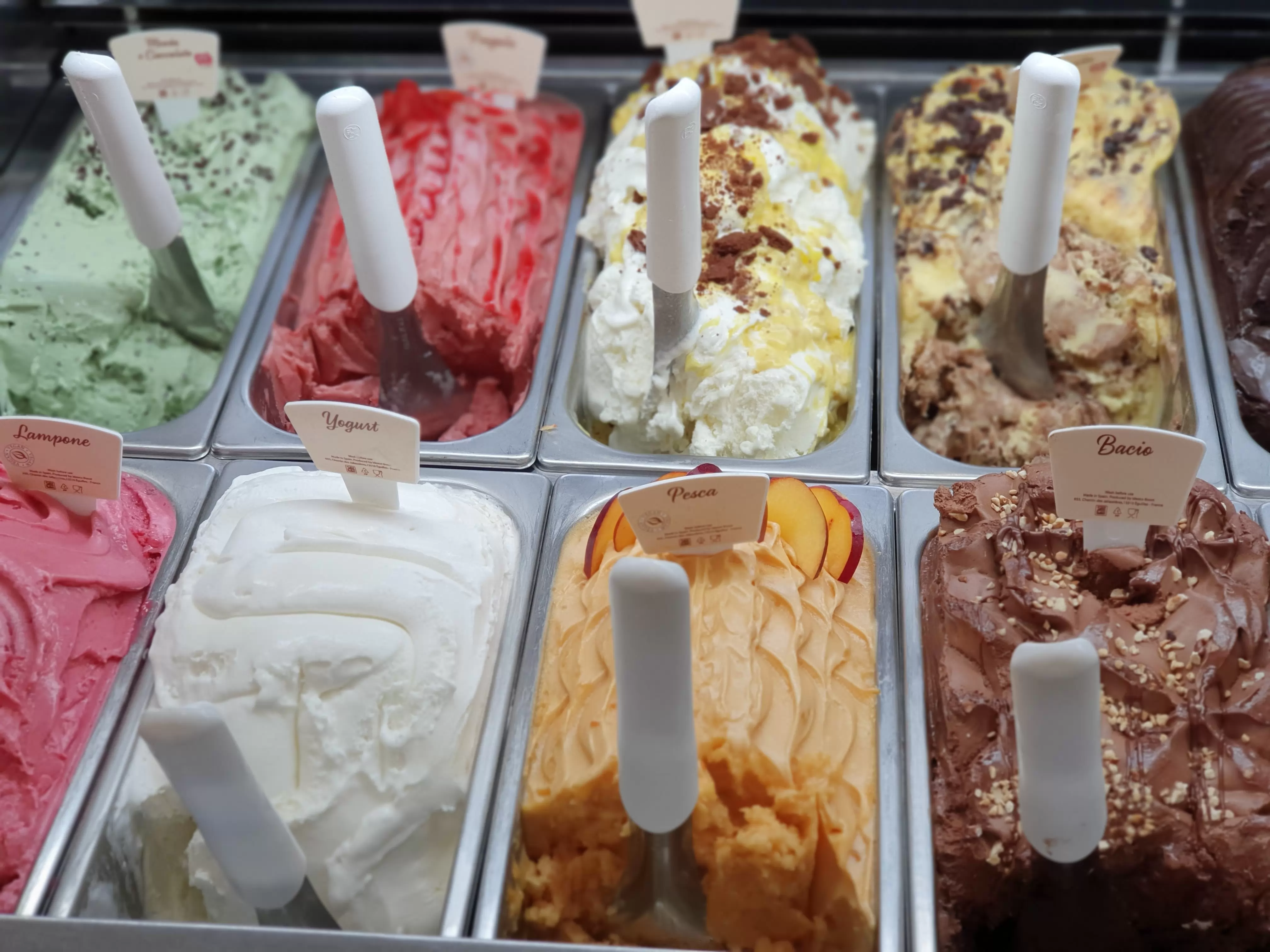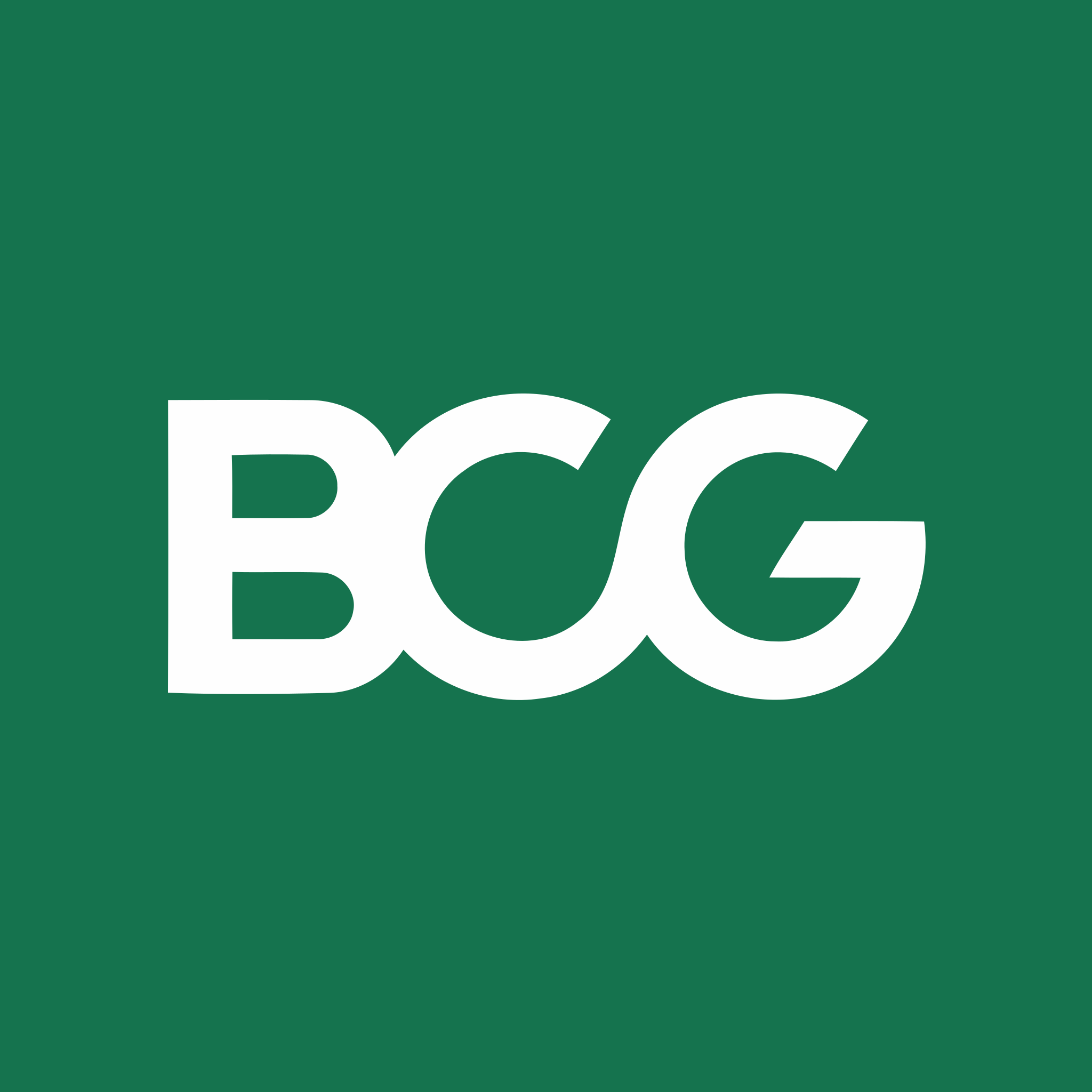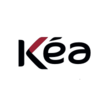Detailed content of our market study
 Inforamtion
Inforamtion
- Number of pages : 35 pages
- Format : Digital and PDF versions
- Last update :
 Summary and extracts
Summary and extracts
1 Market overview
1.1 Presentation and definition of the artisanal ice cream market
Ice cream is a foodstuff made from milk, sugar, fruit, flavourings or natural additives, with recipes that vary according to know-how, region and technology. While there is a general distinction between industrial and artisanal ice creams, the dividing line is becoming blurred as the industry adopts the codes of craftsmanship. And yet, as the Confédération nationale des glaciers de France reminds us, authentic artisanal ice cream is "made with selected, high-quality ingredients, according to a strict code of practice.this is a culinary art that demands expertise and precision.
In 2024, the European artisanal ice cream market reached 11 billion euros in sales, according to Artglace, driven by a network of 65,000 points of sale and 300,000 employees. Italy dominates this landscape, with 60% of sales outlets, compared with just 600 in France ( less than 1% of the European total). This national under-representation contrasts with the growing attractiveness of the segment, driven by a twofold expectation on the part of consumers: more transparency on ingredients and more emotion in tasting.
The French ice cream market as a whole confirms this dynamic: according to Nielsen, the "pleasure" category - which includes ice cream - is the only one to grow in 2024 (+0.7%), despite inflation. This strong signal testifies to the French's undiminished appetite for gourmet, quality products. What's more, consumption remains firmly rooted in certain regions, notably Provence-Alpes-Côte d'Azur, which accounts for nearly a quarter of the sector's artisanal businesses. This geography shows just how much artisanal ice cream remains a local product, often associated with tourism, the Mediterranean climate and local excellence.
The rise of artisanal ice cream is also due to a reinvention of the product offering. Brands such as La Mémère and Terre Adélice focus on traceability, organic ingredients, short supply chains and customized recipes. These players embody a new generation of ice-cream makers, capable of reconciling taste quality with local impact. Formats are also evolving: whole-fruit sticks, ultra-creamy pots, topped cones... Innovation is now a key lever, even for small structures.
But this dynamic is not without its tensions. The giants of the food industry - Unilever, Mars, Nestlé, Ferrero - are investing in the premium segment by reproducing the codes of craftsmanship on a large scale. In 2024, Ferrero launched a Nutella ice cream tub at €4.89, generating sales of €13 million in 13 weeks. This offensive strategy blurs the lines, forcing craftsmen to defend their identity more firmly: local products, total transparency, mastery of recipes, proximity to the customer. Differentiation becomes an economic imperative.
Against this backdrop, the economic fabric remains ultra-fragmented, with 90% of French companies in the sector having fewer than 10 employees. This model, based on small, artisanal, often family-run businesses, demonstrates its resilience, but also its vulnerability to seasonality (54% of sales are concentrated between June and August) and competitive pressure. Nonetheless, artisanal production remains a strong differentiating lever, supported by upmarket, relocalization and territorial storytelling strategies, such as brands such as La Basquaise and Alfagel, which rely on local raw materials and additive-free processes.
Last but not least, artisanal ice cream is gradually opening up to export markets, particularly in organic ranges, with growing success in Germany, Scandinavia and the Gulf. This dynamic confirms that the artisanal model, while still fragile, is well equipped to meet global demand for authenticity, taste and meaning.
1.2 A European market dominated by Italy
In ****, the European artisanal ice cream market generated sales of ** billion euros, up a slight +*% on ****. This growth was driven by a dense network of **,*** sales outlets acrossthe continent, mobilizing ***,*** employees in the industry." The figures for the **** market confirm the central role of artisanal gelato in Europe, a sector of excellence capable of driving the entire food supply chain," emphasizes Dominique Belmonte, President of Artglace. Gelato Day, an annual European event, also bears witness to this craze, with cultural and charitable initiatives, such as the free distribution of ice creams in Piazza Pio XII in Rome in March ****.
Number of artisanal ice cream outlets by country in Europe Europe, ****, as % of total Source: ****
Italy dominates the market with **,*** outlets, or **% of the European total (***).
Finally, the average price of a small cone or cup is *.** euros, with peaks of up to * euros in very touristy areas. On average, an Italian consumes * kg of artisanal ice cream per year, representing an annual expenditure of ** euros, plus *.* euros per tourist. The industry has also benefited from a stabilization in prices (***), following a year of inflation in production costs in ****.
1.3 A growing national market
The French ice-cream market continues to grow, with a dynamic driven by the move upmarket, diversification of the offer and changes in purchasing behavior. In ****, overall ice cream sales reached *.*** billion euros, down slightly on the peak of **** (***). This trend reflects solid growth despite more moderate weather or inflation affecting volumes.
Ice cream sales France, **** to ****, in millions of euros Source: ****
Supermarkets and hypermarkets, which account for a large proportion of sales, posted sales of *.** billion euros in ****, up +*.*% despite a -*.*% drop in volumes. This paradox is explained by a +**.*% rise in the average price per kilo, to *.** euros. This inflation reflects the trend towards higher-quality products, a strategy that benefits both high-end brands and artisanal players.
Against this backdrop, artisanal ice creams retain a marginal but structuring role. Their visibility is increasing, particularly in the summer season and on specialized circuits (***), even if they are still in the minority compared with the industrial behemoths.
Key indicators for the supermarket ice cream market France, ****, as % of total Source: ****
Estimated national market for artisanal ice cream:
on a European scale, the artisanal ice cream market reached ** billion euros in ****, according to data provided by Artglace. This global figure is based on ...
2 Demand analysis
2.1 French buying behavior
Where they buy ice cream reflects a strong preference for traditional channels: **% of French people buy their ice cream in stores, compared with just **% who turn to ice-cream shops, despite the fact that these are the main distribution channels for artisanal ice cream. This underlines the lack of access to these higher-quality products, which are often confined to tourist areas or on sunny days.
General distribution of ice cream purchasing locations France, ****, in Source: ****
If we refine this breakdown, we see that supermarkets alone account for **% of ice cream purchases, followed by specialist frozen food stores(***). Ice cream shops, the preferred channel for artisanal ice cream, only come fourth with **%. This figure shows that there is room for improvement for artisanal ice creams, particularly if they manage to gain a firmer foothold in supermarkets or raise their profile outside the summer months.
Where to buy ice cream in France France, ****, in % (***) Source: ****
When it comes to supermarket purchasing criteria, consumer expectations are clear: taste tops the list(***) is cited by only **%, which may limit the appeal of artisanal ice creams if they fail to distinguish themselves in terms of taste or brand image. This underlines the need for artisans to work ...
2.2 France's favorite ice creams
In ****, the great classics (***) is cited as a priority by only *% of respondents. This confirms that, despite an interest in nutritional values, pleasure remains a central purchasing driver.
Declared preferences for ice cream flavors France, ****, in Source: ****
Appetence for innovative flavors - a category that includes surprising creations such as basil or sesame - nevertheless varies significantly according to socio-demographic profile. Interest peaks among **-** year-olds (***) are much less sensitive. This indicator is essential for artisanal ice-cream brands wishing to position themselves on daring recipes: they will need to target, as a priority, working people in mid-career, with high purchasing power, who are more inclined to try new or top-of-the-range flavors.
Appetence for innovative fragrances (***) France, ****, in % Source: ****
In terms of formats, sticks (***) and the preferences of different consumer profiles.
Breakdown by format - Ice cream France, ****, in market share by value Source: ****
2.3 Cyclical demand
The ice cream market is highly seasonal, concentrated in just a few months of the year. Google Trends data clearly illustrate this cyclical pattern: interest in "artisanal ice cream" climbs systematically between May and September, with peaks in July-August, before falling back to zero or almost zero for the rest of the year. In ****, the peak is reached in August, with an interest score of ** , compared with * the following months.
Source: ****
This seasonality is confirmed by NielsenIQ data on the product seasonality index. With an index of ***, Magnum is the most summery brand, ahead of Nestlé (***). by way of comparison, products with a strong connection to summer, such as Tourtel alcohol-free beer or Nivea sun cream, have indexes of *** and *** respectively. Ice creams thus appear to be one of the products most sensitive to the hot season, ahead even of insecticides or fresh cheeses consumed in summer.
Interest in "artisanal ice cream France, ****-****, in Source: ****
For artisanal ice creams, this cyclicality means that the sales strategy must be concentrated and aggressive over the summer period, with adapted positioning on the shelves, at local markets or in take-away outlets. For the rest of the year, a reduced offer or repositioning on ...
2.4 Environmental awareness still in the minority but on the rise
While indulgence remains the primary driver of purchase, environmental considerations are beginning to weigh on consumer choices, particularly in the packaged ice cream sector. In ****, **% of French people consider individual packaging to be suitable, but **% expect more ecological solutions, reflecting a tension between practicality and sustainability. **% prefer committed brands, while **% buy in individual packaging, but **% try to avoid it when they can. This ambivalence highlights a shift in expectations, without a sharp change in habits (***).
Consumer perception of packaged ice cream France, ****, in Source: ****
This rise in ecological demands is also reflected in the criteria that justify a higher price. **% of French people are prepared to pay more for natural products, **% for local products or products made in France, and **% for reduced or recycled packaging, on a par with less sweet products. These figures place responsible packaging at the top of the list of valued criteria, just behind origin and nutritional quality. For artisanal ice creams, this suggests that a clear commitment to these aspects can justify higher price positioning, provided it is legible and credible.
Importance of reducing packaging by place of purchase France, ****, in Source: ****
Ecological awareness is also more marked among certain profiles: **% of the over-**s say ...
3 Market structure
3.1 Value chain
Source: ****
Value chain:
The artisanal production of ice cream follows a sequence of simple, short but demanding steps, guaranteeing freshness and authenticity.
Selection of ingredients: Artisans choose local and natural raw materials: fresh milk, cream, eggs, sugar, seasonal fruit... Pasteurization: The mixture is heated to around **°C to eliminate bacteria and ensure hygiene, then rapidly cooled. Blending: The ingredients are homogenized to obtain a smooth, stable base. Flavors or inclusions may be added at this stage. Turbining: The mixture is stirred and cooled in a turbine. This process allowsair to be incorporated(***), giving the ice cream its creamy texture. Freezing: The ice cream is immediately cooled to a very low temperature (***) to set the texture and prevent crystals from forming. Storage: Ice creams are stored in the freezer and are ready for consumption within a short time, without any prolonging additives.
3.2 Structure of the artisanal ice cream market: a network of local, seasonal companies
The structure of the artisanal ice cream sector can be pinpointed by means of NAF code **.**Z, which designates "manufacture of ice cream and sorbets". This code covers both artisanal and industrial companies, but it is a useful indicator for observing the evolution of establishments and jobs. Between **** and ****, the number of establishments under this code rose from *** to ***, an increase of **% in thirteen years. This growth accelerated from **** onwards, testifying to a renewed interest in local production, particularly by craftsmen.
Number of establishments under code **.**Z France, ****-**** Source: ****
At the same time, the number of employees linked to code **.**Z remains relatively stable, fluctuating between *,*** and *,*** over the period. In ****, there will be *,*** jobs in the sector, with an average of around ** employees per establishment, confirming the predominance of small structures. This data is consistent with the fact that **% of companies in the artisanal ice cream sector have fewer than ** employees, as shown by another source (***). This underlines the sector's local roots and artisanal logic.
Workforce under code **.**Z France, ****-****, in units Source: ****
Finally, the geographical breakdown highlights a strong concentration in the south of France, with ** companies in the Provence-Alpes-Côte d'Azur region, well ahead of Auvergne-Rhône-Alpes(***). ...
3.3 Distribution
The artisanal ice cream market is based almost exclusively on small-scale structures: **% of companies in France in **** will have fewer than ** employees. This structure illustrates a fabric made up essentially of very small businesses, often family-run, focused on a specific territory and rarely present in supermarkets. This contributes to the richness of the artisanal offer, but limits its visibility on a large scale, particularly in the face of manufacturers.
Breakdown of value by distribution channel France, ****, in Source: ****
In supermarkets, it is precisely these manufacturers who dominate the market. Private labels will capture **.*% of the market by value in ****, ahead of Froneri (***).
evolution vs **** France, ****, in market share points Source: ****
This overall dynamic nevertheless shows an opening. While some brands, such as Unilever, are in decline(***), are on the rise. The decline of historical players combined with the loss of momentum of certain private labels may create niche opportunities for artisans, provided they manage to maintain a clear positioning on quality, origin of ingredients and proximity.
number of references by distribution channel France, **** vs ****, in % Source: ****
3.4 actors
The artisanal ice cream market is based almost exclusively on small-scale structures: **% of companies in France in **** will have fewer than ** employees. This structure illustrates a fabric composed essentially of very small businesses, often family-run, focused on a specific territory and rarely present in supermarkets. This contributes to the richness of the artisanal offer, but limits its visibility on a large scale, particularly in the face of manufacturers.
Company structure in the artisanal ice cream sector France, ****, as % of total Source: ****
In supermarkets, it is precisely these manufacturers who dominate the market. Private labels will capture **.*% of the market by value in ****, ahead of Froneri (***).
Market share of main players France, ****, by value (***) Source: ****
This overall dynamic nevertheless shows an opening. While some brands, such as Unilever, are in decline(***), are on the rise. The decline of historical players combined with the loss of momentum of certain private labels may create niche opportunities for artisans, provided they manage to maintain a clear positioning on quality, origin of ingredients and proximity.
evolution vs. **** France, ****, in market share points Source: ****
4 Offer analysis
4.1 Offer typology
The French ice cream market is characterized by a strong segmentation of formats, dominated by sticks (***).
Market share in value by format - Ice cream France, ****, in Source: ****
Pots, often associated with more qualitative or gourmet individual consumption, account for only **.*% of sales, but are up sharply (***), confirming the trend towards refocusing on single-serving products.
annual trend by format - Ice cream France, ****, in % points Source: ****
Alongside this segmentation by format, an essential criterion for differentiating between industrial and artisanal ice creams lies in the quantity of air injected, known as expansion. This industrial practice aims to artificially inflate the volume of ice cream to make it lighter, but at the cost of a loss of taste and density. The maximum legal air content is **%, i.e. a minimum of *** g of material/liter. Industrial ice creams can contain up to *** g air/liter, as with Carte d'Or (***), while artisanal ice creams are limited to around *%, guaranteeing a denser texture, less aromatic dilution and a better mouthfeel. This density is all the more appreciated by customers in search of quality, transparency of ingredients and genuine expertise.
Today, artisanal ice-cream makers are positioning themselves as the guarantors of a denser, more authentic ...
4.2 Types of artisanal ice cream
The world of artisanal ice cream in France is characterized by a wide diversity of player profiles, recipes, positioning and prices. The majority are independent establishments, sometimes with labels, often committed to local, sustainable or homemade approaches. These artisans promote their know-how through original creations, atypical ingredients and demanding processes.
Some ice-cream makers emphasize their commitment to the environment, such as Unico (***) or Ferme du Bois Louvet, which sells its €* ice creams in a short circuit from Honfleur.
Source: ****
Prices show a noticeable move upmarket. A scoop of ice cream generally costs between €*.** (***).
Last but not least, this hand-crafted offering is seductive in its inventiveness: signature flavors range from mango-ginger-roasted sesame to pistachio, to more daring recipes such as olive & dark chocolate (***) or peach-pepper voatsiperifery sorbet. This creativity, combined with a strong commitment to quality, is a major differentiating factor in the industry.
4.3 Ultra-segmentation of supply and niche strategies: an industrial response to the rise of the craft sector
While artisan ice-cream makers rely on short recipes, transparent ingredients and a strong local identity, some manufacturers are responding by strategically segmenting their offer. The aim: to meet the growing diversity of expectations while maintaining mass distribution. through licensed partnerships, products differentiated by target, and strong marketing innovations, these players seek to occupy all market niches.
Yetigel market share in tube ice cream France, ****, by volume (***) Source: ****
This is the logic behind Yetigel, the leading manufacturer of tube ice creams in supermarkets, with **% of volumes in this segment. Rather than generalizing a standard product, Yetigel fragments its offer by joining forces with iconic brands to create micro-categories:
Targeting nostalgic consumers with Cacolac: by reproducing the exact taste of the famous chocolate drink in a frozen stick made with whole milk and fresh cream, Yetigel aims to capture families attached to "Proust's madeleine" products. Reaching out to children and pop culture fans with Nintendo: with * ice creams featuring Mario or Peach, the brand builds a strong emotional relationship with a young audience. Appealing to teenagers with Granita: by adapting the famous crushed drink into a giant tube format, Yetigel targets at-home summer consumption.
What impact will this have on artisan ice-cream ...
4.4 New supply trends: towards organic, local, high-end artisanal ice cream
Faced with a more demanding demand, the artisanal ice cream offer is renewing itself around three major axes: naturalness, relocating know-how and moving upmarket. Two leading examples - La Mémère and Terre Adélice - embody this transformation.
Farm-based, locally-rooted production
La Mémère ice creams, launched in March ****, rely on a novel production model: mobile laboratories set up directly on farmers' farms enable them to process their organic milk without intermediaries. Each recipe contains **% to **% farm-grown ingredients (***) and noble ingredients, such as chocolate from Maison Le Roux or vanilla from Madagascar.
Percentage of farm-grown ingredients in La Mémère ice creams France, ****, as % of total Source: ****
Retailing at €*.** per *** ml, La Mémère ice creams have a premium positioning, on a par with the major national brands. This system also guarantees fair remuneration: ** centimes per liter of organic milk, well above the average market price, and creates two agricultural jobs per site.
For its part, Terre Adélice, an ice-cream maker established in the Ardèche since ****, also favors direct links with local producers. More than **% of the fruit processed into ice cream comes from the Auvergne-Rhône-Alpes region, thanks to three-year contracts with farmers, ...
4.5 - Local roots and artisanal production as levers of differentiation in the face of industrial giants
In a market largely dominated by multinationals (***) and characterized by massive economies of scale, part of the offer is seeking to distinguish itself through an opposing strategy, based on artisanal quality, mastery of supplies and links with the terroir. This positioning responds to growing consumer expectations for transparency, local know-how and less standardized products, particularly in the ice cream and frozen dessert segments. Two emblematic examples illustrate this logic: La Basquaise and Alfagel.
Founded in **** by the Gomez brothers, La Basquaise has established itself as a heritage brand in France, specializing in the manufacture of cones and filling cups. For over ** years, the SME has been based in Clérieux, in the Drôme region of France, where it boasts a specific production facility designed to maintain an artisanal process, even on an industrial scale.
Origin of raw materials - La Basquaise France, ****, as % of total Source: ****
This strategic choice is reinforced by the company's commitment to its local roots: **% of raw materials are purchased less than *** km from the factory, enabling the company to promote regional sourcing, reduce its carbon footprint, and build a strong discourse on authenticity. This approach has been recognized by the Palme d'Or for French Biscuits ...
4.6 Product innovation as a conquest lever: a necessary response to manufacturers' move upmarket
While artisanal ice creams have historically capitalized on authentic taste, quality raw materials and traditional know-how, manufacturers are stepping up their offensive in this field by replicating artisanal codes on a large scale. The emblematic example of summer **** is that of Ferrero, which launched a Nutella in June, combining three creamy layers of its famous spread with a hazelnut-flavored glazed envelope. The product, sold at €*.** in supermarkets, generated sales of €** million in just ** weeks, achieving a **.*% value market share in the jar segment, according to Nielsen.
Market share in the frozen pot segment France, summer ****, by value (***) Source: ****
This strategy illustrates a turning point: the major groups are no longer content with standardized, low-cost products; they are investing in emotion, texture and top-of-the-range pleasure.sometimes even playing on rarity or seasonality - attributes historically reserved for craftsmanship. This phenomenon complicates the positioning of independent ice-cream makers, who must now compete with an industrial offer that is increasingly qualitative... and narrative.
For artisanal players, this implies an imperative to innovate without denying their fundamentals. Several levers can be activated:
Work on differentiating recipes: additive-free ice creams, sorbets with over **% fruit, original flavor combinations, or exclusive ripening processes. Create signature formats: double-coated ice ...
5 Regulations
5.1 Ice regulations
Regulations applicable to ice cream:
The manufacture and marketing of ice creams in France are governed by the Code des pratiques loyales des glaces alimentaires, drawn up by the CNGF/SFIG to ensure fair professional practices, clear consumer information and consistency with European law.
Definition and scope
Ice cream is a foodstuff composed of authorized ingredients (***), in which case only the "ice cream" parts are covered by the Code.
labeling
Ice cream labelling must comply with the Consumer Code. The net quantity must be expressed in volume and/or mass. Any designation used must reflect the actual composition of the product. The use of a regulated name implies strict compliance with precise criteria.
Regulated ice cream categories
The Code distinguishes several categories, each subject to compositional conditions. Here is a summary of these categories:
These names are reserved: they can only be used if the product meets the associated conditions. otherwise, another generic name must be used.
Ingredients and tolerances
Some categories require the exclusive presence of milk fat (***). However, tolerances do exist, notably for flavorings naturally containing fats or proteins, or for gelatin.
European recognition
Ice creams legally produced in another EU or EEA member state may be marketed in ...
6 Positioning the players
6.1 Player segmentation
6.2 The analyst's eye
Context:
The European market for artisanal ice creams is structured around an indisputable Italian leadership, with **% of sales outlets located in the peninsula.of sales outlets are located in the peninsula, compared with less than *% for France, which appears to be a marginal player. This imbalance underlines thehistorical and cultural lead of certain countries in the development of a structured craft industry. In addition, the highly seasonal nature of sales, more than **% of which are concentrated in the months of June, July and August, imposes an irregular rhythm on the business and is a major constraint. this is a major constraint on the profitability of sales outlets, which have to cope with customer flows that are highly concentrated over time.
Main trends :
*st trend: artisanal ice cream remains a minority channel in France: in ****, only **% of French people will buy their ice cream from an ice-cream shop, compared with **% in-store.
*nd trend: Production concentrated in the southeast. by ****, the Provence-Alpes-Côte d'Azur region alone will be home to ** ice cream and sorbet of the national total, far ahead ofAuvergne-Rhône-Alpes (***). This distribution underlines the strong link between climate, tourist appeal and the location of artisan ice-cream makers.
trend *: An ...
- L'albero dei gelati
- Fiordipanna
- Gelateria Badiani
- Callipo Gelateria
- Gallizioli Pasticcerie
- L'Angélys
- Glace des Alpes
- La Fabrique Givrée
- L'artisan Givré
- La Glacerie Paris
- Glace Bachir
- O sorbet d'amour
- Glacier Zizi
- L'Artisan Glacier
- La Maison du Glacier
- Erhard Patissier Glacier
- La Tropicale Glacier
All our studies are available online in PDF format
Take a look at an example of our research on another market!
 Choosing this study means :
Choosing this study means :
Access to more than 35 hours of work
Our studies are the result of over 35 hours of research and analysis. Using our studies allows you to devote more time and added value to your projects.
Benefit from 6 years' experience and over 1,500 industry reports already produced
Our expertise enables us to produce comprehensive studies in all sectors, including niche and emerging markets.
Our know-how and methodology enable us to produce reports that offer unique value for money.
Access to several thousand articles and paid-for data
Businesscoot has access to all the paid economic press as well as exclusive databases to carry out its market research (over 30,000 articles and private sources).
To enhance our research, our analysts also use web indicators (semrush, trends, etc.) to identify market trends and company strategies. (Consult our paying sources)
Guaranteed support after your purchase
A team dedicated to after-sales service, to guarantee you a high level of satisfaction. +44 238 097 0676
A digital format designed for our users
Not only do you have access to a PDF, but also to a digital version designed for our customers. This version gives you access to sources, data in Excel format and graphics. The content of the study can therefore be easily retrieved and adapted for your specific needs.
 Our offers :
Our offers :
The artisanal ice cream market | France
- What are the figures on the size and growth of the market?
- What is driving the growth of the market and its evolution?
- What is the positioning of companies in the value chain?
- Data from several dozen databases
Pack 5 études (-25%) France
- 5 études au prix de 74 €HT par étude à choisir parmi nos 1200 titres sur le catalogue
- Conservez -25% sur les études supplémentaires achetées
- Choisissez le remboursement des crédits non consommés au terme des 12 mois (durée du pack)
Consultez notre catalogue d’études sectorielles















